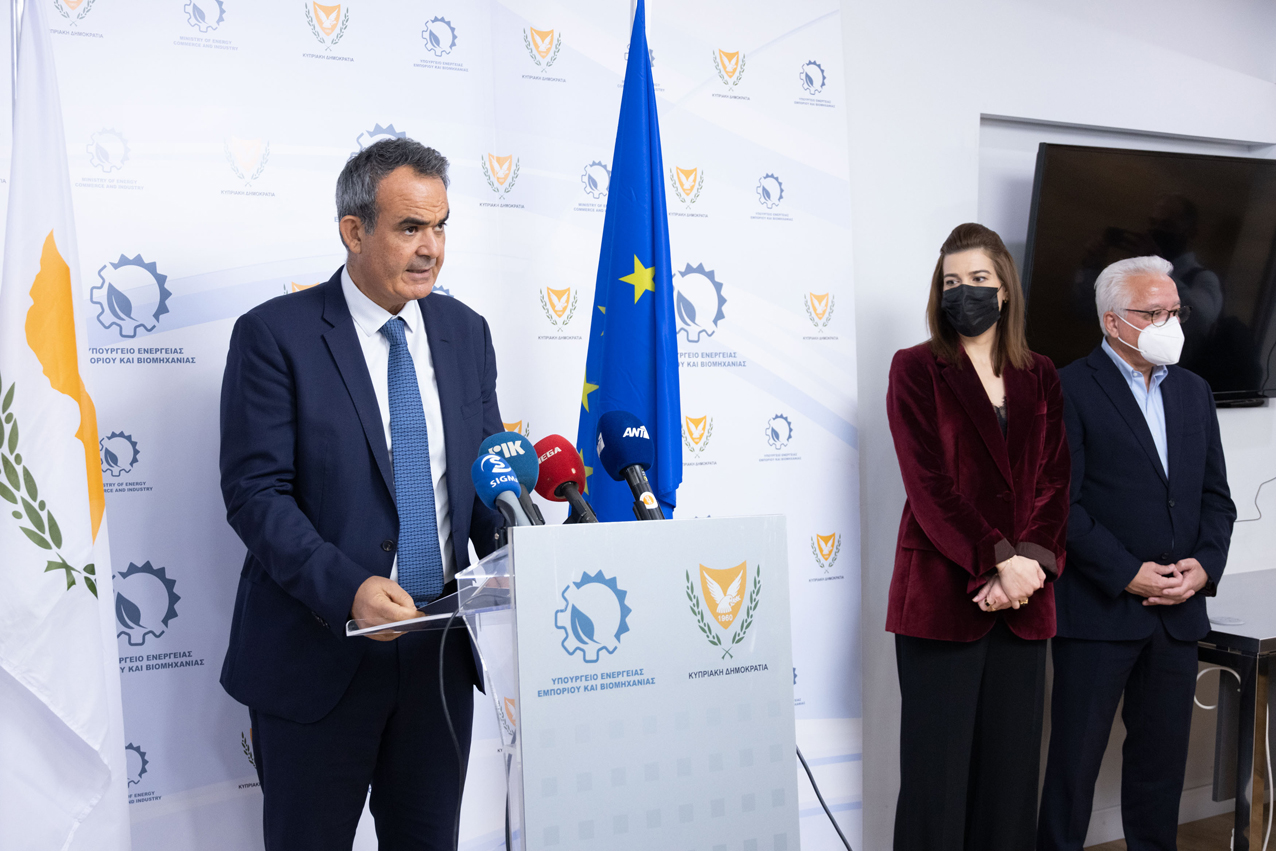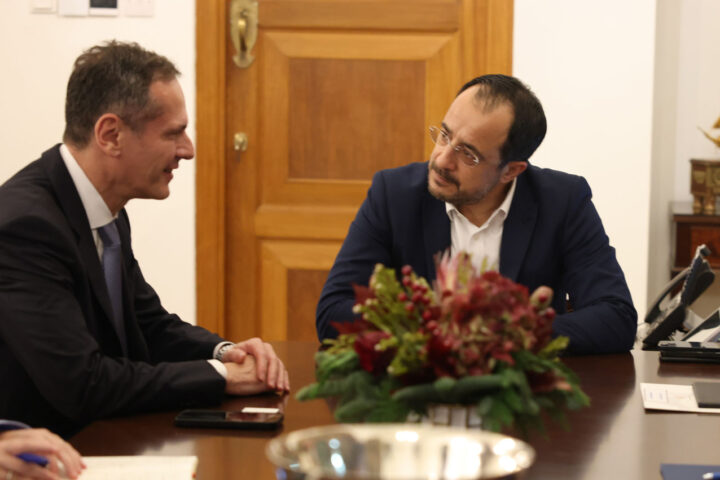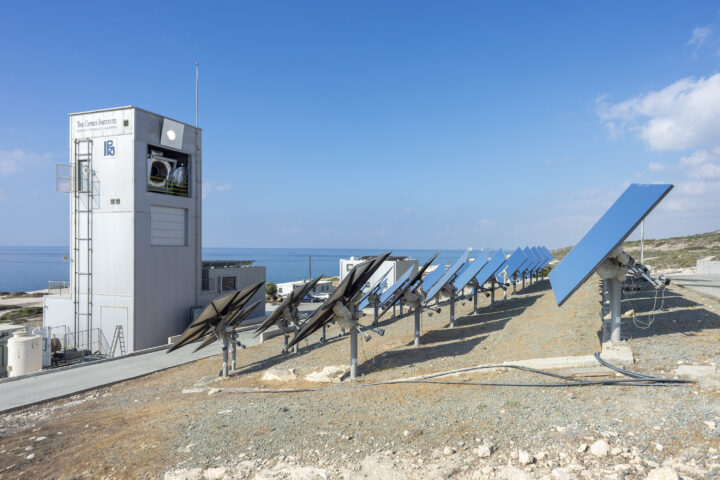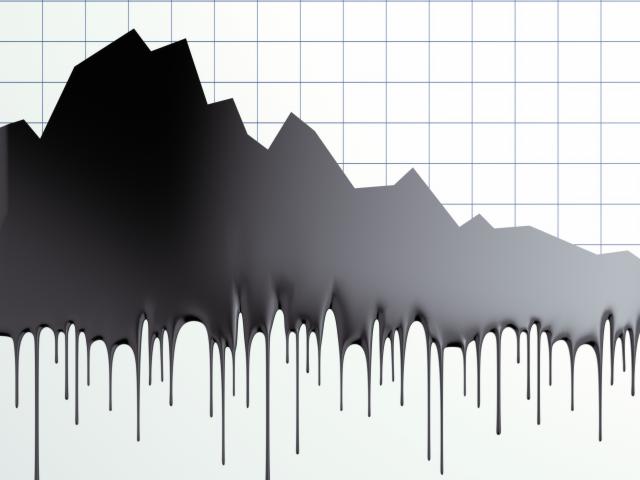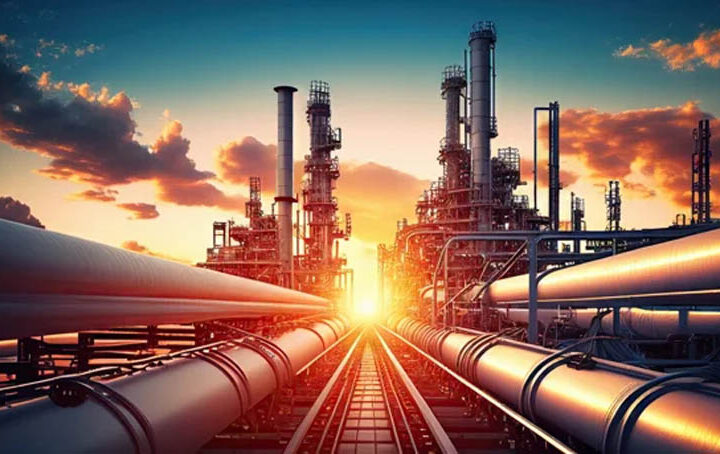The EuroAsia Interconnector, the subsea electricity cable linking Cyprus and Israel with continental Europe, via Greece, has secured a record €657 mln in EU financing geared at clean energy sources, like solar and wind.
It is considered the most important milestone since the project ends the island’s energy isolation.
Energy Minister Natasa Pilides said Thursday this money is “the biggest ever secured for a project of the Republic of Cyprus, and comprises the lion’s share of the €785 mln available from the ‘Connecting Europe Facility for electricity interconnections in 2021.”
“This is the most important step in the implementation of the project.
“Securing the funds makes possible the start of construction works on the Cyprus-Crete sector, the cost of which is estimated at €1.575 bln.”
When Brussels announced the CEF decision on Wednesday evening, Pilides said, “this is excellent news for Cyprus”.
She told a media briefing that EuroAsia Interconnector’s application to CEF was initially for €687 mln, “and almost the entire amount was approved”.
A brief process of consultations will get underway between the project promoter and the European Commission, leading to the signing of a financing agreement by summer.
Project Director George Killas said construction works get underway this year and completed by the end of 2025, with the electricity interconnection commissioned at the latest in the first half of 2026.
“We have come a long way from that historical presentation in Nicosia on January 23, 2012, when we launched the project to a curious crowd, eager to find out how Cyprus could deal with energy shortages in the future,” Killas said.
Mari blast
The project was first conceived after the devastating munitions blast at Mari in July 2011 that decimated the nearby electricity power station at Vassiliko and brought the national grid to its knees.
Rolling blackouts at the peak of summer caused irreparable damage to the economy, with many businesses suffering for years after that, followed by the banking and economic crisis of 2013.
Studies for the national plan for energy and climate suggest the electricity interconnector can help boost Cyprus’s penetration of renewables (RES) to 50% of the island’s energy mix.
“Beyond the obvious geopolitical importance, the EuroAsia Interconnector ends the energy isolation of Cyprus, ensures energy security and contributes towards developing a competitive electricity market.
“It is the cornerstone of our transition to a green economy,” Pilides said.
She said this would also help attract related investments and introduce more RES projects into the energy mix of all three stakeholder countries – Cyprus, Greece and Israel.
Beyond EU funding for surveys during the past decade, acknowledging the subsea cable as a Project of Common Interest (PCI3.10), it has secured €100 mln from the amount allocated to Cyprus last year under the Recovery and Resilience Facility instrument to help cope with the Covid-19 crisis and improve competitiveness.
Having secured 50% of the cost of the Cyprus-Crete link, Pilides said the project promoter would find it easier to get financing from banks and other investors.
“Certainly, securing EU funding is now more attractive for investors because it makes the project much more feasible and sustainable.”
Killas said the EuroAsia Interconnector: “Consists of the electrical interconnection of the power systems of Cyprus-Greece (Crete) and Cyprus-Israel with direct current (DC) submarine cables and with HVDC converter stations at each connection point.
“It will have a total capacity at the present stage of 1000 MW and capability of increasing to 2000 MW. The EuroAsia Interconnector is the energy bridge between Asia and Europe, with a total length of 1208 km and creates a reliable alternative corridor for the bidirectional transmission of electricity between the Eastern Mediterranean and Europe.”
Affordable energy
Announcing the CEF decision, which included funding five cross-border projects – four projects for construction and one study – the EU’s Energy Commissioner Kadri Simson said: “Recent months have reminded us again how crucial a well-integrated EU energy market is for ensuring affordable energy and security of supply.
“While we have made remarkable progress in the last decade with making our market better connected, more can and should be done.
“I want to particularly highlight the EuroAsia interconnector that will bring an end to the energy isolation of Cyprus and link it to the rest of Europe,” Simson said.
The project has secured all the necessary licenses in Cyprus, pending permission in the other two countries.
Following a memorandum of cooperation signed by the three countries last year, working groups have been established to review technical issues and fast-track the final approvals.
On Wednesday, the European Commission said the €2.5 bln EuroAsia project “interconnects the transmission networks of Cyprus and Greece, allowing the transmission of electricity in both directions and ending the energy isolation of Cyprus.
“The 898km of undersea cables and maximum sea depth of 3,000 meters will set new world records for a project of this kind.
“This investment is a continuation of the financial and political support of the EuroAsia project.”

